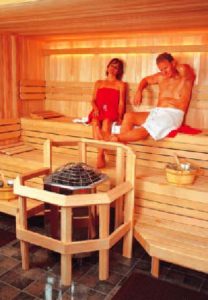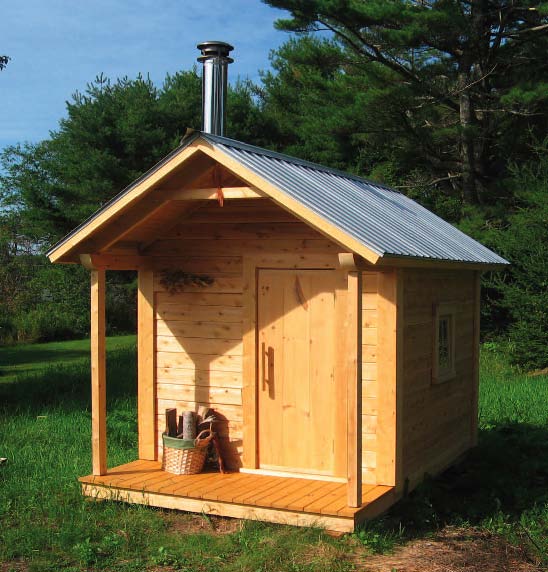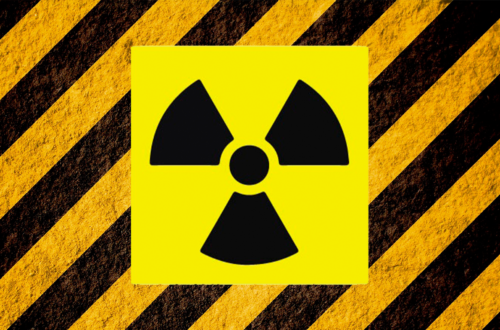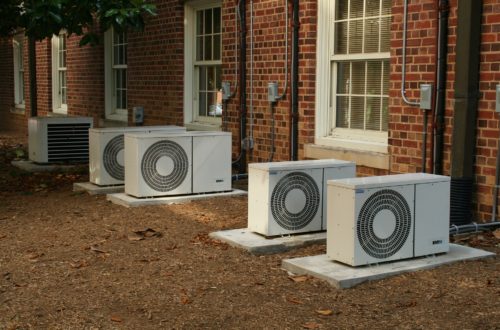 Sometimes it is a simple wood-paneled room, with an electric heater and a thermometer on the wall, letting us know how hot it is. It may be at the gym, or fitness center, or maybe in your own home. Sometimes it will be a small freestanding building in a wooded glen with an authentic wood-burning heater. “It” is a sauna, and saunas bring different images to mind for different people.
Sometimes it is a simple wood-paneled room, with an electric heater and a thermometer on the wall, letting us know how hot it is. It may be at the gym, or fitness center, or maybe in your own home. Sometimes it will be a small freestanding building in a wooded glen with an authentic wood-burning heater. “It” is a sauna, and saunas bring different images to mind for different people.
Saunas were largely unknown in this country before the 1950s, but have steadily become more popular as the source for both good times and therapeutic benefits. Pronounced “SOW-na”, it is a Finnish word that describes both the process of the bath, and the place where the bath takes place. There are many cultures around the world where a form of sweat bath is part of daily life, but here in North America, most of us associate this form of bathing with the far northern latitudes of the planet. After all, Helsinki is at 60 degrees north, about the same as Anchorage, Alaska.
The process and terminology of the sauna are legacies of Finnish immigrants. The time line begins 2000 years ago when forest people living in what is now modern Finland began to heat and steam their bodies in small enclosed shelters similar in design to the domed ‘sweat lodge’ of the native people of North America.
Anthropological evidence of early saunas show fire rings in close proximity to hollows in the ground or places protected by the cavity created when a large tree is toppled with the roots intact. Hooped branches or saplings supported a covering of boughs or hides, making an enclosed space that could be made warm even in an extreme winter environment. There are still people who see value in the primitive process of crawling into the dirt floor interior of a sweat lodge environment, but most people today prefer a comfortable wooden room with platforms on which to sit or recline.
Why is the dry heat of a sauna preferable to a hot shower or bath after a day of work or recreation?
We know that immersion in or standing under a stream of hot water feels nice enough after an afternoon skiing or stacking wood, but the sauna will warm you in a way that hot water never can. And you will stay warm!
Your skin will thank you too, especially as you age. The older we get, the less tolerant our body systems, in particular skin, are to trauma. Sweating helps the skin to clean, ex-foliate, and refresh. No soap needed; your body does it naturally. You’ll feel, afterwards, as if a long, soapy shower is a big step backward.
Sweating helps the skin to clean, ex-foliate, and refresh. No soap needed; your body does it naturally. You’ll feel, afterwards, as if a long, soapy shower is a big step backward.
Perspiring also provides a way for the body to expel and release toxins and impurities that otherwise accumulate in tissue. The effectiveness of this can be seen by the fact that a sauna is sometimes prescribed in the detoxification regimen used to help individuals diagnosed with “sick building syndrome,” in which a person is adversely affected by the chemicals used in modern construction materials. If the sauna can help people who are seriously ill due to toxic accumulations in the body, think of how the routine use of the sweat bath can improve overall health.
Dry heat can also relieve muscle soreness, regardless of source. Strained muscles relax and benefit from the increased blood flow induced by the heat. Lactic acid levels are reduced, and the production of endorphins increased to ease muscle aches and contribute to a sense of overall well- being. After a sauna and a good night’s rest, you won’t wake up stiff and sore, but pain-free, ready for the day’s activity .
What about stress?
To many sauna enthusiasts, stress relief is the primary benefit. We live in a fast-paced world, with plenty of opportunity for emotional overload. Sitting in a warm, dimly lit room-enjoying the quiet calm- seems to help the day-to-day worries melt away. Beyond the relaxation and endorphin pulse, the calm restfulness induced by sauna makes for a good night’s sleep. This benefit has real value.
But beyond these and other therapeutic benefits, perhaps the one we mustn’t forget is the social and spiritual aspect of sauna. We sit or recline with our partners, friends and family, usually wearing what we came into this world wearing, often in gentle light, or sometimes with just the glow of the fire if one is lucky enough to use a woodburner fitted with a glass door. Just outside the small window, the winter sun is fading, tree shadows across the snow-covered land lengthen and swallow up the near view terrain in patches of silver and grey and deep blue. Daylight is nearly gone. The winter cold will keep its grip-but inside, the warmth penetrates your skin. Your body has been enveloped in a blanket of dense, even heat. The air is calm but powerfully radiant … the whole space a vessel of comfort.
Every now and then, the host will pour a ladle of fresh water on the heated stones, releasing a plume of steam, what Finns call ‘the spirit of the sauna”, into the hot dry atmosphere. The exhilarating feeling of intensified heat is powerful but short-lived, as the room quickly returns to the hot, dry state.
There is a primal feel to a sauna, no matter how modern its construction. Your companions breathe at a deliberate, even pace … warm air in, warm air out. Church-like, near silence seems appropriate, creating a cadence that is subtle, yet profound. There is no need to speak just now, only to relax think deep thoughts.
As the quiet deepens, other sounds filter in, perhaps the drip of water from the melting snow on the roof. The fire takes on a life of its own. If fuel has just been added, the flame will quicken and crackle with life. If the fuel load is waning, you become aware of the slow exhale of smoke up the flue.
Sauna literature is marked by frequent references to the church-like atmosphere within. The similarities are obvious. They are both places that nourish and renew the spirit. But in the sauna your body is cleansed as well. The deep calm and sense of well-being that follow a stint in the sauna are difficult to describe or measure, but when you finally step to the door, it will be with thoughtfulness and reflection pirits or sauna, then there can be no hope.” Sauna for life and sauna for health … indeed!
Nils Shenholm is a life long designer and builder, and has provided both traditional and modern saunas from his shop in Duxbury, Vermont since 1989. He is a charter member and board member of the North American Sauna Society. Learn more and see his work at saunavermont.com.
Photos courtesy of the author.





